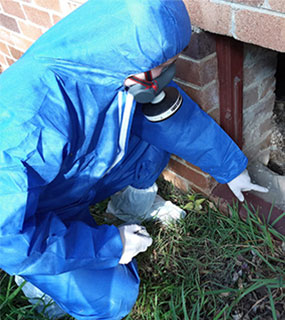Asbestos, a naturally occurring mineral, was once lauded for its versatility and used extensively in construction, manufacturing, and various industries for its strength, heat resistance, and insulating properties. However, discovering its health hazards has since cast this material in a dangerous light. Asbestos exposure can lead to serious health problems, including asbestosis, lung cancer, and mesothelioma, a rare and aggressive form of cancer. This has made asbestos air monitoring an essential practice in protecting public health and safety. This article explores the crucial importance of airborne asbestos monitoring, shedding light on its significance in today’s society.
The Health Hazards of Asbestos Exposure
The dangers of asbestos exposure are well-documented. When asbestos-containing materials (ACMs) are disturbed, they can release fine fibers into the air, which can become lodged in the lungs, thus causing inflammation and scarring. The latency period between exposure and the onset of disease can be several decades, making it a silent but deadly threat. This underscores the need for stringent air monitoring to prevent exposure and protect individuals from these severe health risks.
The Role of Asbestos Air Monitoring
Airborne asbestos detection involves measuring the concentration of asbestos fibers in the air to assess the risk of exposure in environments where asbestos is present or suspected. This process is critical in a variety of settings, from construction sites and buildings undergoing renovation to schools and residential areas. The primary objectives of asbestos exposure evaluation include ensuring that airborne levels remain below legal and health safety standards, assessing the effectiveness of control measures, and protecting individuals from the risks of asbestos exposure.
Types of Airborne Asbestos Detection
There are several types of airborne asbestos monitoring, each serving specific purposes:
Background Monitoring: Conducted to establish a baseline level of asbestos fibers in the air before any disturbance of ACMs.
Exposure Monitoring: Measures the concentration of asbestos fibers in the air that individuals are exposed to, ensuring they do not exceed regulatory limits.
Control Monitoring: Used to assess the effectiveness of control measures in place to limit the release of asbestos fibers during work with ACMs.
Clearance Monitoring: Performed after asbestos removal or disturbance activities to confirm that the area is safe for reoccupation.
These monitoring types are integral to a comprehensive asbestos management plan, ensuring safe environments for occupancy and use.
Legal and Regulatory Framework
Governments worldwide have established strict regulations and guidelines for asbestos management, including air monitoring. These regulations are designed to protect workers, residents, and the general public from the hazards of asbestos exposure. Compliance with regulations is a legal and moral imperative for businesses and property owners. Regular asbestos air monitoring is a key component of compliance, ensuring the safety of environments where asbestos might be present.
The Impact of Airborne Asbestos Detection on Public Health
Implementing rigorous asbestos exposure evaluation programs has a profound impact on public health. Corrective action can be taken to mitigate exposure and prevent health issues by detecting asbestos in the air at early stages. This proactive approach is vital for reducing the incidence of asbestos-related diseases and enhancing the quality of life for individuals in affected environments.
In conclusion, asbestos air monitoring is a critical defense mechanism against the hidden dangers of asbestos exposure. It is a cornerstone of public health and safety, ensuring that individuals can live, work, and learn in environments free from the threat of asbestos-related diseases. The importance of this practice cannot be overstated, as it protects current and future generations from the devastating health impacts of asbestos. Through continued vigilance and adherence to strict air monitoring protocols, society can effectively manage the risks associated with it and safeguard the well-being of all.



